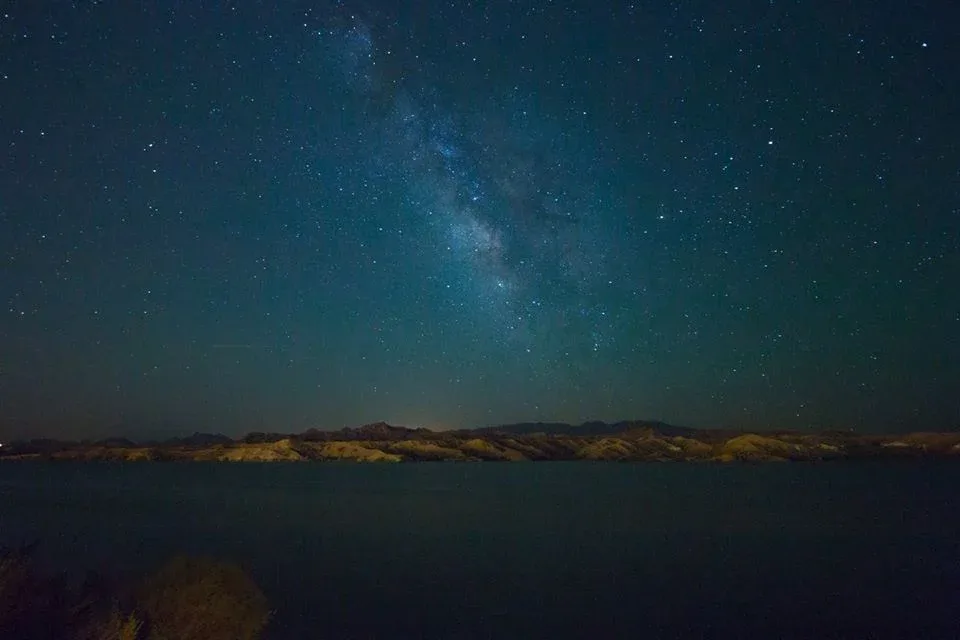
Events
Lake Havasu City hosts exciting, year-round events that embrace the region's sunny skies, scenic landscape and endless fun.
Lake Havasu City is one of Arizona's best locations for desert stargazing.
With an average of 290 sunny days (and clear nights) a year, the outdoor fun doesn’t have to end when the sun goes down. Lake Havasu City founder Robert P. McCulloch designed the city with no streetlights in any of the residential areas, leaving our night skies visible with billions of brilliant stars for one to wish upon.

Venture just a few miles outside of town and witness an unmatched, crystal-clear look at our galaxy. If you're lucky enough to be in the area during a meteor shower, you'll see shooting stars throughout the evening—something you probably won't see under the bright lights of a big city.
The Lake Havasu Astronomy Club (LHAC) brings local amateur astronomers together to share information and promote astronomy as a hobby. The club offers these tips for new desert stargazers:
Download one of the many sky-gazing apps (such as Sky Map for Android users and StarWalk for iDevice users) and head out of town. Venturing just a quarter mile or so into the desert, or out on one of the area's many off-road trails, opens up the sky to even more amazement. Or head out on a boat and witness the marvelous view overhead from the lake. Either way, you’ll be in an excellent place to take in an unobstructed look at our galaxy.
When the moon isn't full, look for the Milky Way: the galaxy that contains our solar system. Sadly, the Milky Way isn't visible to most of the U.S. due to light pollution, something the LHAC tries to avoid by holding their events at the abandoned Site Six airport and in Cattail Cove State Park.
Bring your own binoculars; they're a great way to see star clusters such as the Pleiades, among the nearest star clusters to Earth and the one most visible to the naked eye in the night sky.
Attend a LHAC star party, held periodically for the public and also privately for groups and organizations. During the parties, you can look through members’ telescopes and enjoy the Arizona night skies. Check the club's Events page for dates, times and locations.
Visit the LHAC website for a clear sky chart and current updates for when the moon won’t wash out the light from planets and stars.
The club’s favorite viewing locations include:
Bison Drive (end)
Very good, but dirt trails and no facilities
Site Six overflow parking lot
Good, some light but convenient and lots of parking. Facilities across the road at Site Six.
SARA Park Trailhead
Very good, except when the lights turn on as someone approaches the restrooms
Yonder Park
Good, but no facilities and only on-street parking on a small residential street. The area above Yonder Park is a confirmed vortex site, so stargazers can experience a sense of wellness as they marvel at the wonders overhead.
Scenic Pullout (just south of Milepost 171 on Highway 95)
Very good, and just a short drive out of town
From our solar system, five planets are visible to the eye: Mercury, Venus, Mars, Jupiter and Saturn. Planets don't create light like a star; rather, sunlight illuminates their surfaces and we are able to see them in the same way as we see our moon (but just not as big).
How do you tell a planet from a star? The general rule is tars twinkle and planets don't. Stars twinkle because they're so far away and any disturbances in the atmosphere make the star's light bounce around, making it appear to 'twinkle'.
Unless the constellation is 'circumpolar' -- visible nightly and year-round -- each season brings with it a new set of constellations due to the earth's orbiting the sun. Five constellations are circumpolar: Ursa Major and Minor (Big and Little Dipper), Draco, Cepheus, and Cassiopeia. Click here for maps of the constellations best seen during specific months of the year.
Another popular sighting opportunity is the International Space Station. According to NASA:
Watch the International Space Station pass overhead from several thousand worldwide locations. It is the third brightest object in the sky and easy to spot if you know when to look up.
Visible to the naked eye, it looks like a fast-moving plane only much higher and traveling thousands of miles an hour faster!
You'll never get tired of stargazing in the desert because there's always something new to discover. Whether you're camping in the desert or in a camping cabin, walking the Island for an evening stroll or just stepping outside your front door, our desert night sky is a stargazer's best friend.
The Lake Havasu Astronomy Club meets on the 2nd Thursday of every month (September - June) at 6:30 p.m. at the Mohave County Public Library, located at 1770 McCulloch Blvd N. The club has no membership dues and the public is always welcome to attend.
This website uses cookies to enhance your website experience. Learn More
Events
Lake Havasu City hosts exciting, year-round events that embrace the region's sunny skies, scenic landscape and endless fun.
Itineraries
Lake Havasu City has a variety of tours that explore the town, lake, and desert. If you're short on time or just possess an independent…
Outdoor Adventures
Lake Havasu City is a true recreational oasis, offering year-round outdoor adventures for every kind of escape. Dive into boating, paddleboarding, and fishing on the…




